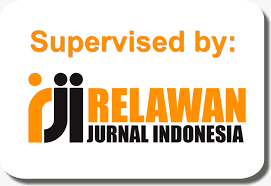Grammatical Errors Made by the Students During Seminar Proposal Examination
DOI:
https://doi.org/10.52333/djoee.v4i2.183Keywords:
grammatical errors, seminar proposal, spoken languageAbstract
Those proficient in spoken English grammar can adequately grasp the English language. This ability differs significantly from written English grammar since it occurs naturally and spontaneously during conversations without any preparation. This study examined spoken grammatical errors committed by English major students during the seminar proposal examination at one public university in Jambi. To carry out this study, the researcher utilized case study research. This research effort enlisted the participation of five students from the eighth and tenth semesters of an English education study program, one male and four females. The researcher classified the grammatical errors based on Richard’s theory (1990) as (1) Errors in the production of verb groups, (2) errors in the distribution of verb groups, (3) miscellaneous errors, (4) errors in the use of prepositions, (5) errors in the use of articles, and (6) errors in the use of the question. The spoken grammatical errors were assessed using the six categories above after listening, audiotaping, and transcribing their seminar proposal assessment. The findings and discussion sections will go through each feature type in further detail. The researcher expected to get some distinct information in relation to students’ spoken grammatical errors and make some improvements through teaching and learning developments.
References
Ancker, W. (2000). Errors and corrective feedback: Updated theory and classroom practices. Forum, 38(4), 20-25.
Brown, H. D. (1994). Teaching by principles: An interactive approach to language pedagogy. Prentice Hall.
Duff, P. A., & Li, D. (2004). Issues in Mandarin language instruction: Theory, research, and practice. System 32(2), 443-456.
Hambali, M. (2008). Shortcut strategies in analyzing sentence structures in TOEFL. LINGUA: Jurnal Bahasa dan Sastra, 9(2), 82-88.
Hilliard, A. (2014). Spoken grammar and its role in the English language classroom. English Teaching Forum, 52(4), 2-13.
Karlsohn, T. (2016). The academic seminar as emotional community. Nordic Journal of Studies in Educational Policy, 2016: 2-3, 33724. DOI: 10.3402/nstep.v2.33724.
Katz, J. J. (1966). The philosophy of language. Harper and Row Publisher.
Leech, G., & Svartvik, J. (2002). A communicative grammar of English. Routledge: Taylor & Francis Group.
Lennon, P. (1991). Error: Some problems of definition, identification, and distinction. Applied linguistics, 12(2), 180-196.
McCarthy, M. (2006). Exploration in corpus linguistics. Cambridge University Press.
McCarthy, M., & R. Carter. (1995). Spoken grammar: What is it and how can we teach it? ELT Journal 49(3), 207-218.
Richard, J.C. (1990). Error Analysis: Perspectives on second language acquisition. Routledge
Siahaan, S. (2008). Issues in linguistics. Penerbit Graha Ilmu.
Soma, R. (2018). Using inductive and mechanical drills strategies to develop students’ ability in using English active and passive voice. English Empower: Journal of Linguistics and Literature, 3(2), 92-99.
Stenstrom, A. (2004). An introduction to spoken interaction. Longman: Pearson Education.
Uysal, N. D., & Aydin, S. (2017). Foreign language teachers’ perceptions of error correction in speaking classes: A qualitative study. The Qualitative Report, 22(1), 123-135.
Willis, D. (2003). Rules, patterns, and words: Grammar and lexis in English language teaching. Cambridge University Press.
Downloads
Published
How to Cite
Issue
Section
License
Copyright (c) 2023 Robi Soma

This work is licensed under a Creative Commons Attribution-NonCommercial-ShareAlike 4.0 International License.







